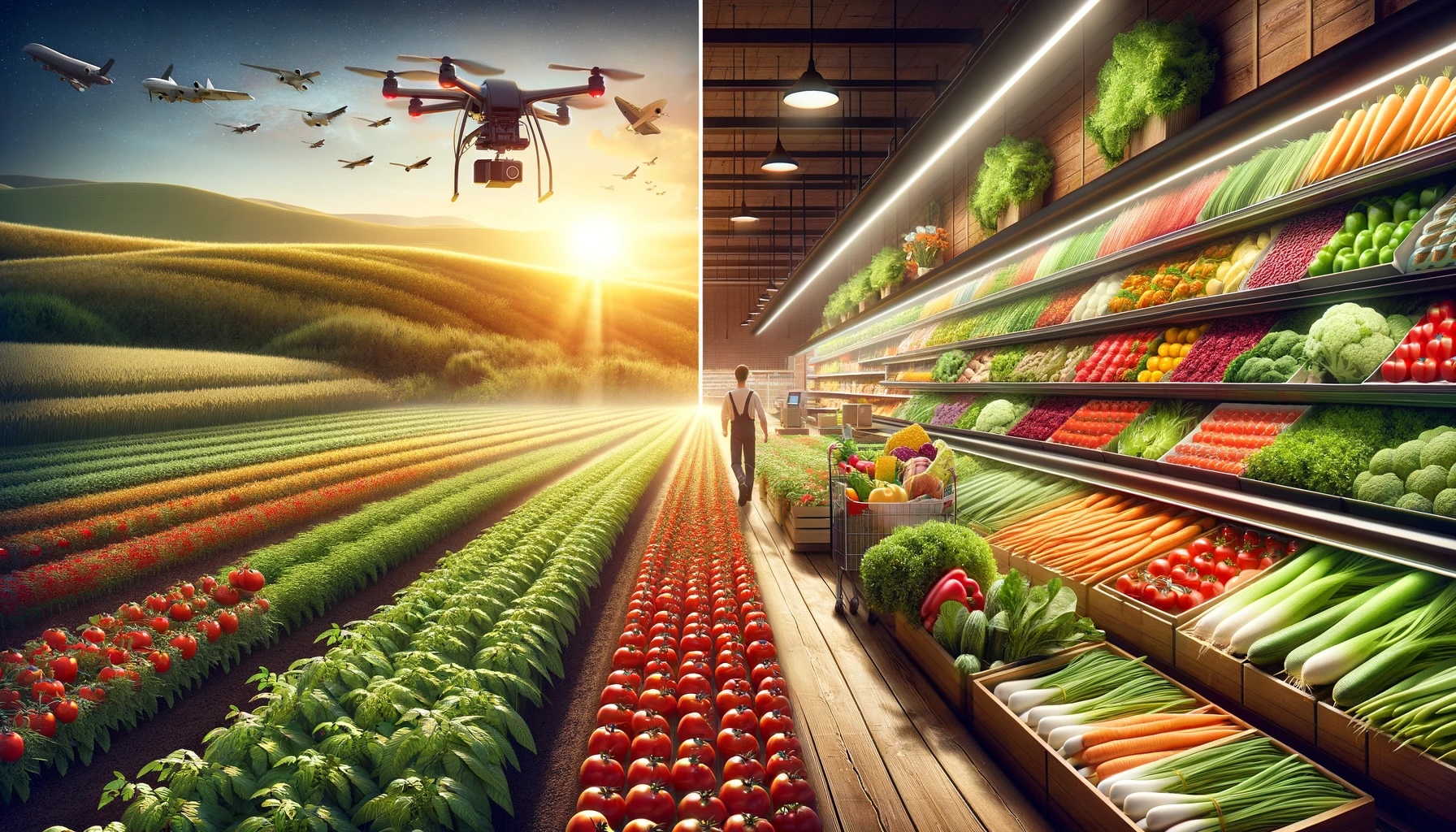Your basket is currently empty!

The logistics aspect of supply chains is increasingly being digitised, and is now often referred to as Digital Logistics.
To find out more about this I invited Till Dengel to come on the show. Till is the Global Head of Digital Logistics Solution Management at SAP, so if anyone could fill me in on Digital Logistics, what it is, and where it is going it would be Till.
We had a great discussion and right at the end Till mentioned that his team had created a digital logistics compendium. This is a very comprehensive ebook with a lot of videos and interactive material for anyone interested in trends and customer stories in this field.
Below is a full transcript of our conversation:
TR: Hi everyone. Welcome to the digital supply chain podcast. My name is Tom Raftery and with me on the show today, I have our special guest Till. Till, would you like to introduce yourself?
TD: Yes. Good morning Tom. I’m very happy to be here. So Till Dengel is my name I globally cover our solution management for digital logistics, which includes our solutions for fulfillment, for warehousemanagement, for transportation, and the Logistics, Business Network.
TR: Okay, cool. Interesting. Just for anyone who isn’t completely aware with logistics, can you give us kind of a logistics 101. What, what is logistics? What does it do?
TD: Well, the logistics I think per definition is the know how goods move through a system and managing that system as goods flows through a supply chain and through different processes in a supply chain. And as we talk about the digitization of logistics processing, it’s basically how to automate and how to process things through warehousing, through a transportation, like scheduling, routing of logistics, or move in a supply chain and then eventually tracking those moves, with solutions for track and trace. But also with visibility tools to provide transparency as the goods move through the supply chain. So it’s really that end to end management and transparency that you’re trying to gain by using technology, as goods flow through a supply chain, or anetwork.
TR: Okay. And obviously the digitization of logistics has given huge advantages and is disrupting the markets;I imagine significantly for our customers. Can you give me some examples of the kinds of things that arechanging, and ways in which our customers are benefiting?
TD: Yeah, so for absolutely, I mean on one thing, technology has changed the game, but on the other side also the way we perceive logistics in our private life. And I think that has a very big impact also on the, on how companies deal with each other. I mean by now we are used to when we order something online that had arrives next day or sometime even same day, and there isn’t, are the same expectation of course, in a business to business environment. And in order to achieve that, you can only do this if you can automate your business processes to a very large extent. And these are the business processes that you have in the warehouse for picking, packing and shipping, but also the business processes around scheduling and routing a truck. So there has to be a lot of automation and that’s obviously, you know, what SAP, where we, where we come from of driving those business processes and trends.
But then there’s of course other technologies which are really changing the playing field in logistics. So one I think is very significant is around internet of things and sensor technology. Um, you can stick a sensor on almost anything today because the sensor technology is so cheap, um, that that you can just put it on some thing and you can track that item as it moves throughout the supply chain. Um, so that’s one big trend that’s changing the game here. Um, the other big one is the blockchain trend of course. It’s still a trend that I would say is I’m moving from its infancy, getting more and more mature. Almost every customer I talked to has at least a proof of concept in the blockchain environment. But that obviously speaks to the supply chain integrity and how goods move through supply chain, tracking on who touched the goods, where did they originate from and and what happens to the goods as they move throughout the supply chain. So that’s another technology that’s very big.
And then the last one I want to mention or the second to last is machine learning and data science. And obviously data science is not new to solutions like, transportation management with automated routing and scheduling. But with machine learning and the advent of machine learning and so many universities, working in this field, there’s just a lot more skills and a lot more knowledge around the topic and the market, which is really useful for the logistics industry, which has a lot of data from all these movements and can make use of that.
And then the last one I would like to mention is the cloud. And why is the cloud important? Well, because you have, different deployment models and you can much more quickly spin up and spin down for example, awarehouse. And we see those quite often with our customers. They are for example looking for that they run a campaign and they’re looking for a, they need a warehouse for six weeks, eight weeks as they ran a campaign in a city. So with the cloud you can spin up warehouse really quickly, run your warehouse processes to your pick pack ship and then spin it down again. So this was not possible many years ago and that’s, I think the big trends that are driving on the logistics industry.
TR: Okay. That’s interesting. That’s four huge trends that are happening and they’re obviously happening at kind of different paces as well. I mean you mentioned that uh, blockchain is very much in its infancy, whereas I imagine cloud is probably further along the line and machine learning is probably somewhere in the middle. How are we doing with, you know, the likes of a customer adoption? You mentioned some and blockchain are doing proofs of concepts, where are we with adoption rates in some of these technologies?
TD: Yeah, I would say the sense that technology and the IOT is probably most adopted just because there has been a lot of investment in those areas in the past few years. And it’s, I mean, building out interfaces and integrating these sensor technologies. Um, blockchain I mentioned, I think it’s, um, there are first few really good use cases. Um, customers are making the business case to invest broader and they are experimentingwith it, which I think is a really good sign that something is moving here. And obviously in blockchain what’s also interesting, it started with a few industries like for example, pharma, which obviously has that need for end to end visibility and enter and tracking of products and batches and everything. But it now moves across into other industries that is also a good sign. So, for example, we’ve talked to a lot of customers from the luxury goods industry, which of course also wants to know the whereabouts of these high value items as they move them through the supply chain and they want to know who touches with them. So thatsthe blockchain in terms of maturity.
Data science I think is a very mature in this industry. Like I said, machine learning is now coming to it, but working with algorithms and more sophisticated methods to determine scheduling and routing and things like that, that’s been around for 10 years, maybe even more. So I think that’s probably the most mature I would say.
TR: Okay. And then, the adoption of these things depends on many factors. I mean, part of it is skilled resources availability, but part of it as well is potential for outcomes. If something is only going to give me a 1% increase or a 10% increase, does this big difference between the two. In in terms of outcomes, where do you see the the best potential for people with digital logistics?
TD: It’s an interesting point. You mentioned as obviously outcomes is always the end of every business case that, that our customers are driving when adopting those technologies. So when we talk about this data science part and a machine learning part, the outcome of that of course is increased efficiency and increased automation. And if you look at logistics, I mean logistics is reoccurring patterns. There’s only, you know, a certain amount of possibilities and variations that you can move a container through a network, let’s say from Asia to Rotterdam, for example, there’s only a certain amount of vessels, only a certain amount of routes you can take, and a main leg and, and some sequence they can pre leg and things like that. So there’s only a certain amount of variation. So why shouldn’t a system automatically plan this and support the dispatcher sothe dispatcher doesn’t have to do this manually. So it’s clearly the outcome here is using these technologies like the data science part of it to automatically drive this and by that increase efficiency.
The other outcome of course in the same area is in the warehouse management space. I mean many warehouses these days run completely in the dark. Nobody, humans only touch in a very few touch points the product, but there’s a lot of automation already in the warehouse since many, many years. I mean, that of course speaks very much to the outcome and efficiencies and that’s where our customers make the case that they say, I want to come from a manual warehouse into more of an automated warehouse using software and using for example, packaging algorithms and algorithms that run, pick wave and things like that and thereby increase efficiency on automation. So that’s the efficiency side of the outcome.
What’s also very interesting and that’s a change that you’ve seen lately, is that if you look at more of the top line and the revenue portion of it and the customer centricity part of it, many customers we talk to these days look at logistics as a differentiator. In the past that was looked a lot like it’s a cost driver and we need to, you know, drive cost out of the system. Now it’s looked at more and more like if my logistics experience or if my delivery experience is not good, if my parts, my container arrived late, the experience reflects on the product. So the more I invest in product experience, customers tend to also invest in that delivery experience part of it, which is another outcome, but which is obviously not on the cost side and the bottom line, but rather more on the top line.
TR: All right. Very good. Very good. So lots to think on there. Where, where is all this going? You know, we’re seeing trends towards digitization, but you know, where is all this going to go in the next five to 10 years do you think?
TD: Well, there’s obviously a lot of movement in automation in terms of drone technology and self driving vehicles and things like that. I mean, all of that is obviously in the beginning, but I think in the next few years we see a lot of that becoming more and more mainstream. Obviously not everywhere in the world but incertain parts for example. We get already today, um, we connect to, for example robots and, and different parts in the warehouse so robotic technology in the warehouse is becoming mainstream as we speak. And I think this will expand into the yards and it’s been expand more and more onto the roads or maybe on, you know, some closed roads or from specific lanes where you see automatic driving and, and things like that. So, I think that’s one big trend that’s happening.
And then the other big thing is the rise of the networks, which we haven’t talked much about. So logisticsnetworks basically, meaning that you can manage a business process with your stakeholders, with your partners, or a shipper can manage that with the 3PLs and the carriers. They can all get together online in one single system in the cloud and manage a business process end to end. So that obviously contributes a lot to the business process execution capabilities and the efficiencies of that end to end processing, but also to the transparency that you can provide as if everybody that participates in that supply chain is on one single system. So I think here we will see a lot of that.
And if you look into where investment money is going these days on VC capital is going is exactly in that area of business networks across the different modes and across the different regions of the world.
TR: Interesting. Great. One final question Till. This is a question I often ask people at the end of the show, just in case I’ve missed something. Is there any question that I haven’t asked that you think I should have?
TD: Usually that is the question is, you know, around we talked a lot about automation and efficiency and those things. So usually there is always the question of what does that mean in terms of will there people be in the, I mean the logistics is a huge industry. Will the people be put out of jobs and things like that. And I think the interesting part around that is, I think, you know, the manual labor parts in the warehouse and transportation and things like that and I think they will definitely be challenged in my perspective because there is a robot, there’s more and more automation coming in, similar to what we’ve been seeing in the manufacturing industry a few years back. But on the other side there is a lot of skills and a lot of new employment opportunities around the topic of data science, machine learning, and digitizing these end to end supply chains,which is obviously a different kind of job. But here we definitely, and that’s what we hear from our industry councils and from customers we speak. There’s still a huge skill gap. And for example here in central Europe, it was identified that skilled people, in the logistics industry that know the process, that knowthe industry and that know technology, a huge gap and actually imposing a risk on the digitization of global supply chains.
TR: Interesting. Right, so if people want to know more Till, about Till or about digital logistics, our supply chains or any of the topics we’ve discussed today, where would you have them go? What, what kind of links would you like me to put in the show notes?
TD: So you’ll find myself on LinkedIn. I’d be very happy. There’s a lively community going on. Very happy to connect to anyone that wants to be connected and talk more about the logistics industry, which I’m very passionate about. That’s LinkedIn. Otherwise, sap.com of course there is a, a very large area around logistics and supply chain. And the last topic Tom I’ll provides you with a link to what we have created which is ourdigital logistics compendium, which is a very comprehensive ebook with a lot of videos and interactive material for anyone that’s interested in what’s going on in terms of trends and what are customers doing, obviously using our software in this field.
TR: Oh very good superb. That’ll be very useful, I’m sure for lots of people. I’ll definitely put a link to that in the show notes. Thanks a million for that.
Till that’s been great. That’s been really interesting. I’ve learned a lot. I hope all our listeners have as well. Thanks a million for coming on the show today.
TD: Thank you so much.
If you want to know more about any of SAP’s Digital Supply Chain solutions, head on over to www.sap.com/digitalsupplychain and if you liked this show, please don’t forget to rate and/or review it. It makes a big difference to help new people discover it. Thanks.
This podcast was initially published on the DigitalSupplyChainPodcast.com website
Hello,
I’m Tom

Welcome to my website where you’ll find my latest musings on all things related to sustainability, technology, and supply chain.





